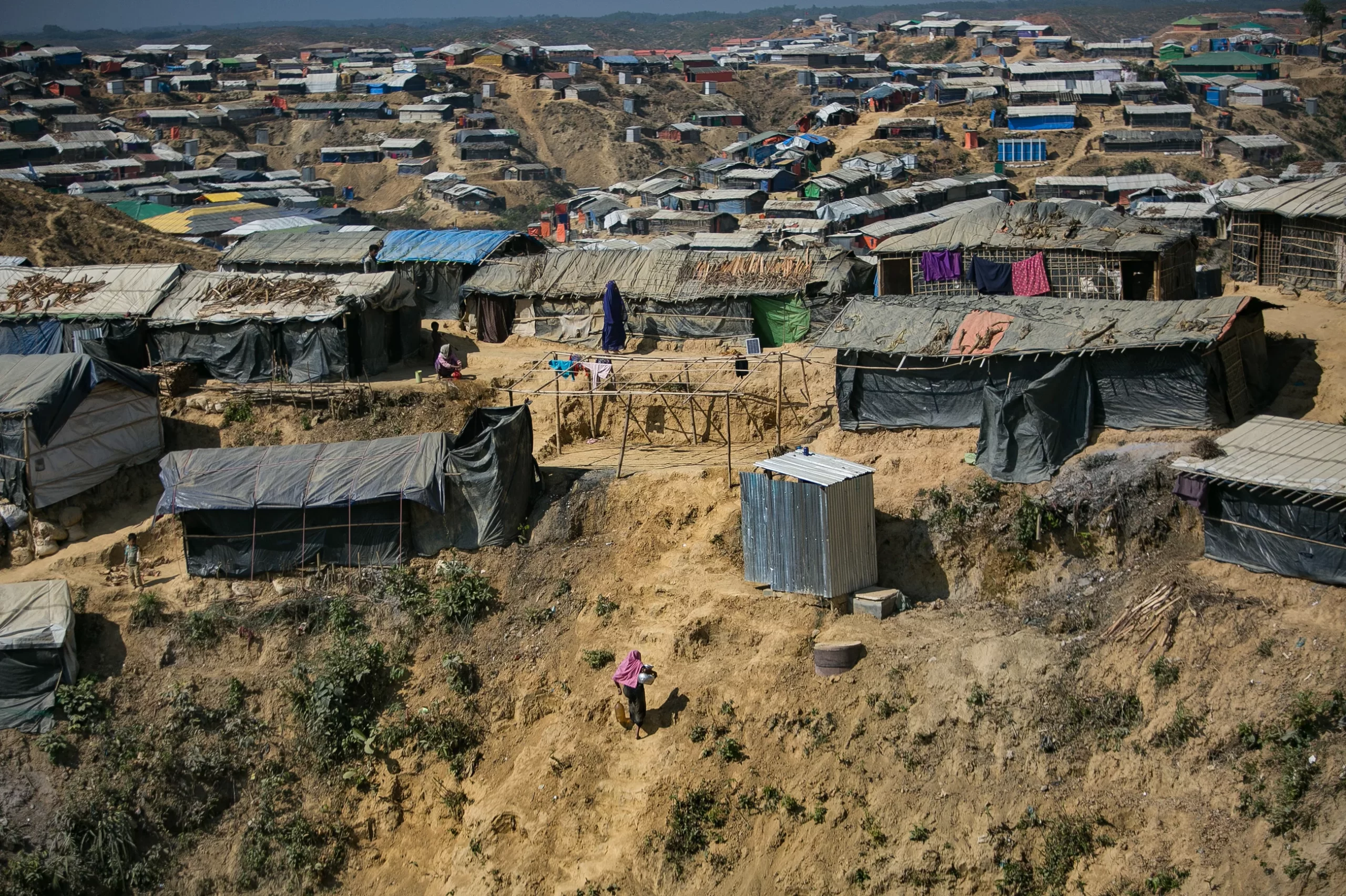Myanmar
Fire burns in a Rohingya refugee camp in Cox’s Bazar, Bangladesh. [Reuters]
Just across the Myanmar border in Cox’s Bazar, Bangladesh sit Kutupalong, Nayapara, and 31 more of some of the most densely populated refugee camps in the world. These camps are home to nearly one million Rohingya refugees from Myanmar’s Rakhine state. The Rohingya are a Muslim ethnic minority group that have lived in Buddhist majority Myanmar for centuries. In 1982, the Rohingya were denied citizenship and became the world’s largest stateless population. Since the 1990s, Rohingya refugees have fled into Bangladesh in the face of religious persecution, however, the crisis was greatly exacerbated in August 2017 when brutal military crackdowns forced over 700,000 people to flee their homes. Reports of indiscriminate killing of civilians, villages being burned down, and Myanmar authorities planting landmines along the border with Bangladesh led the United Nations High Commissioner for Human Rights, Zeid Ra’ad Al Hussein, to state that the situation was a “textbook example of ethnic cleansing.” Additionally, while the military operations in the Rakhine state were initially in response to a series of attacks from Rohingya militants, the High Commissioner stated that Myanmar’s response was “clearly disproportionate” and “without regard for basic principles of international law.”

A woman carries water up a hill in the Balukhali Rohingya refugee camp in Bangladesh. [NPR]
Of the 965,000 refugees in Cox’s Bazar as of September 2023, 52% are children and 52% are women or girls. The lack of legal status for the Rohingya people further complicates attempts to relocate refugees and find social and economic opportunities. In recent news, on the morning of January 7, 2024, a massive fire broke out in Kutupalong, the largest refugee camp in the world, destroying 900 shelters and jeopardizing roughly 5,000 refugees.
Sources: UN Refugee Agency, UN News, Council on Foreign Relations